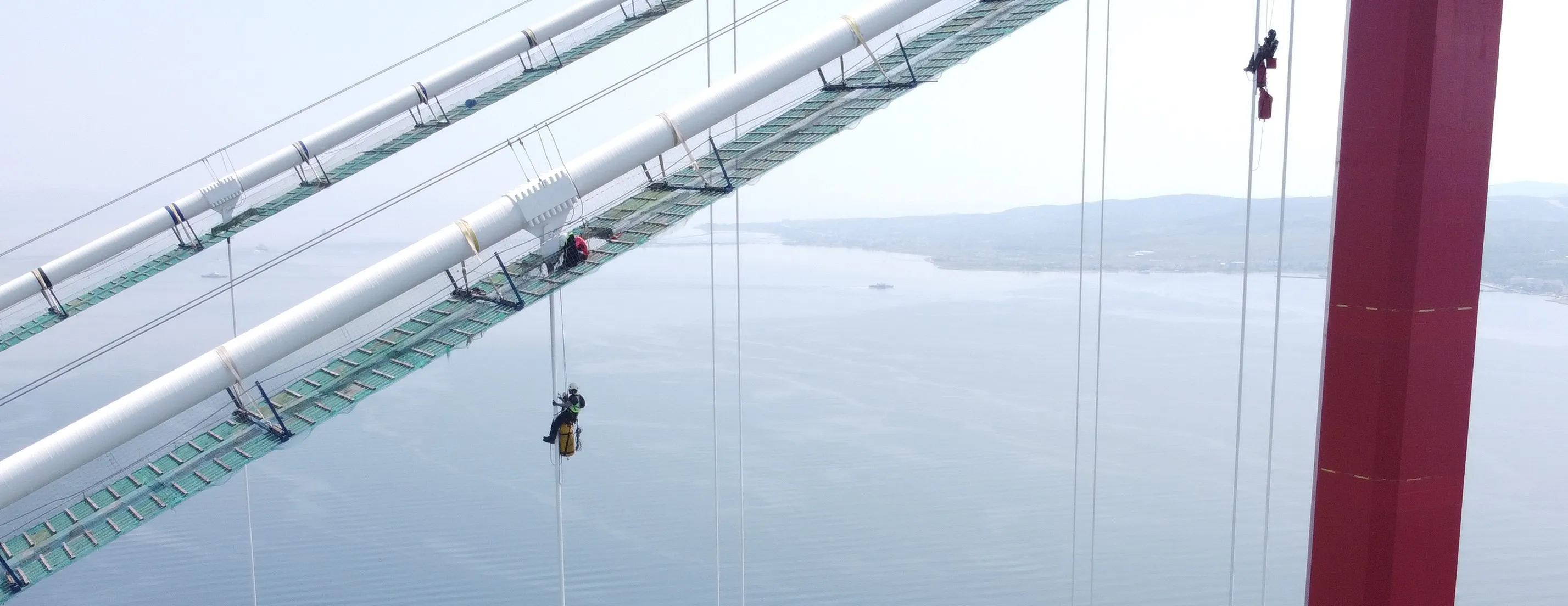A sophisticated construction method has been used for the first time in South Africa for a suspended bridge project
This novel method of bridge construction was used on a major road upgrade project for the South African National Roads Agency Limited (SANRAL). Main contractor Lonerock Construction, and subcontractor Tzandeboo Construction, used RMD Kwikform’s Megatruss system to construct a 60m-long bridge while suspended mid-air over the live N4 highway.
Lonerock Construction’s US$8.5 million (R132
May 16, 2016
Read time: 3 mins
RSSA sophisticated construction method has been used for the first time in South Africa for a suspended bridge project
This novel method of bridge construction was used on a major road upgrade project for the South African National Roads Agency Limited (SANRAL). Main contractor Lonerock Construction, and subcontractor Tzandeboo Construction, used RMD Kwikform’s Megatruss system to construct a 60m-long bridge while suspended mid-air over the live N4 highway.
Lonerock Construction’s US$8.5 million (R132 million) contract will see the R24 carriageway widened from two lanes to four, and the 60m-long bridge constructed over the N4 Highway. This is a crucial route as it carries a high percentage of heavy vehicles travelling to and from the mining areas in Rustenburg. Lonerock Construction and Tzandeboo Construction worked with RMD Kwikform to devise a solution that would reduce the impact of construction activities on the live N4 Highway.
RMD Kwikform’s local branch manager and senior engineer, Rossouw Fourie, and technical manager and senior engineer Marius Els, designed the final solution in collaboration with RMD Kwikform’s UK-based headquarters, drawing on the company’s International experience in bridge construction.
Rossouw Fourie said, “Due to the location of the bridge, we had to create a solution that minimised the impact of construction on the surrounding areas, and didn’t affect the flow of traffic on the N4 Highway. Using RMD Kwikform’s Megashor high-duty modular propping system, we constructed a total of two towers and five Megatrusses, each weighing 34tonnes.
“We were able to suspend the bridge deck 710mm above the initial design level by tie bars attached to the Megatrusses; once the concrete had been poured and struck, the Megatrusses were then removed and the bridge deck constructed in mid-air before being lowered into place.”
One of the key challenges of this project was the casting sequence of the bridge deck. Tzandeboo Construction had to pour the first and second abutments from the ground up in order to support the towers; the towers and trusses were then situated on top in preparation for the bridge deck.
The site team also had to coordinate each concrete pump to sit between the trusses, to ensure that the concrete could be poured from the middle outwards without hindrance. In total, 954m3 of concrete was used to construct the entire bridge deck.
This novel method of bridge construction was used on a major road upgrade project for the South African National Roads Agency Limited (SANRAL). Main contractor Lonerock Construction, and subcontractor Tzandeboo Construction, used RMD Kwikform’s Megatruss system to construct a 60m-long bridge while suspended mid-air over the live N4 highway.
Lonerock Construction’s US$8.5 million (R132 million) contract will see the R24 carriageway widened from two lanes to four, and the 60m-long bridge constructed over the N4 Highway. This is a crucial route as it carries a high percentage of heavy vehicles travelling to and from the mining areas in Rustenburg. Lonerock Construction and Tzandeboo Construction worked with RMD Kwikform to devise a solution that would reduce the impact of construction activities on the live N4 Highway.
RMD Kwikform’s local branch manager and senior engineer, Rossouw Fourie, and technical manager and senior engineer Marius Els, designed the final solution in collaboration with RMD Kwikform’s UK-based headquarters, drawing on the company’s International experience in bridge construction.
Rossouw Fourie said, “Due to the location of the bridge, we had to create a solution that minimised the impact of construction on the surrounding areas, and didn’t affect the flow of traffic on the N4 Highway. Using RMD Kwikform’s Megashor high-duty modular propping system, we constructed a total of two towers and five Megatrusses, each weighing 34tonnes.
“We were able to suspend the bridge deck 710mm above the initial design level by tie bars attached to the Megatrusses; once the concrete had been poured and struck, the Megatrusses were then removed and the bridge deck constructed in mid-air before being lowered into place.”
One of the key challenges of this project was the casting sequence of the bridge deck. Tzandeboo Construction had to pour the first and second abutments from the ground up in order to support the towers; the towers and trusses were then situated on top in preparation for the bridge deck.
The site team also had to coordinate each concrete pump to sit between the trusses, to ensure that the concrete could be poured from the middle outwards without hindrance. In total, 954m3 of concrete was used to construct the entire bridge deck.









